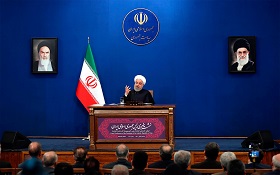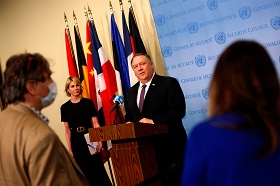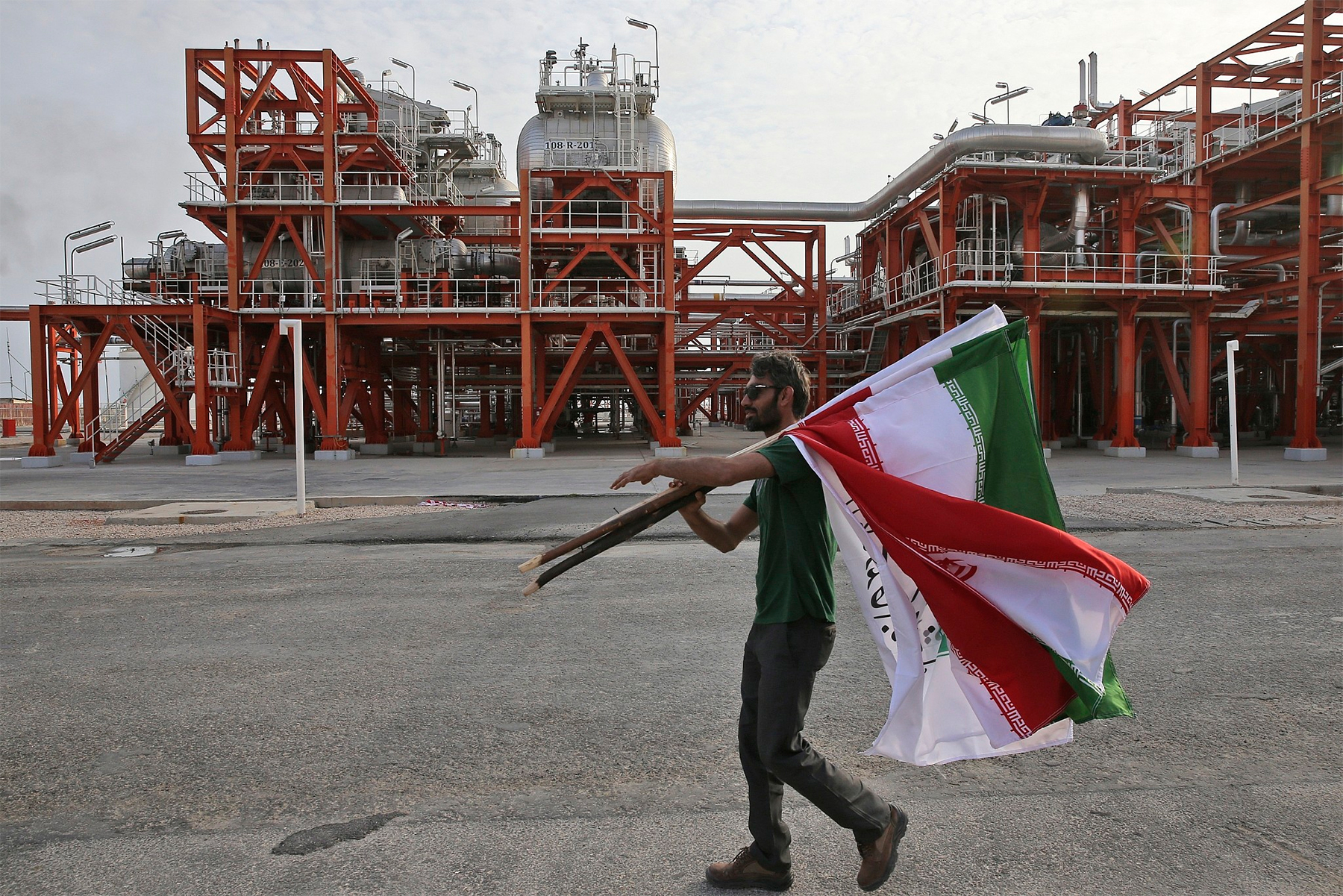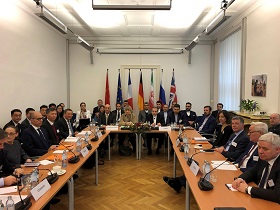As sporadic protests occur in Iran, some experts claim that radical regime changes are inevitable, listing the adverse economic situation, corruption and unprecedented pressure of the sanctions among the principal factors behind the instability. It appears, however, that Iran's political system has not exhausted its stability potential: it is highly adaptable and capable of successfully adjusting the parameters of the domestic political process in response to the changing environment, this adaptability stemming from a unique combination of the Islamic tradition and modern political institutions.
For our conceptual framework, we will use David E. Apter’s classical idea linking political changes to points of a collective or individual choice that may be normative (moral), structural and behavioural. In our study, we will focus on the combinations of political and religious institutions that emerge when choices are being made. We will also consider the principal features of these institutions and attempt to assess their possible reproduction trajectories. This angle will, moreover, allow us to demonstrate the Iranian statehood’s development potential and possible challenges to it.
Iranians continue to view their future and Iran’s further development in a positive light. Individual independence and commitment to post-material values are increasing, while confidence in government institutions and religious norms remain in place. In the long-term, Iranians tend to avoid uncertainty and are not ready to revise the established rules of the game. At the same time, reliance on stable values, primarily pride in their historical legacy and religious and philosophical tradition, allows the course of political transformations to be smoothed out.
As regards selecting its political elite and aggregating public interests, the system finds equilibrium points through controlled competition between candidates, which is affected by means of open electoral procedures and by putting potential candidates for key religious and political offices through multiple rounds of elimination.
Applying the logic of normative and structural choice to analysis of various combinations of traditional and modern institutions prompts the conclusion that the Iranian system’s ability to “keep up with the events” is determined by the level of its ideological and political mobilization and a successful combination of two forms of domestic competition: civil electoral and religious bureaucratic.
The political equilibrium will be reproduced only if electoral process transparency and accountability are increased at all levels. This equilibrium is principally based on the values shared by the majority of Iranians: loyalty to the authorities, obedience to religious rules, accompanied by the simultaneous growth of individualism and the conviction that people’s opinions need to be taken into account in political decision-making. The meritocracy principle needs to be maintained in unelected governance bodies; this principle remains closely linked with Iranian society attaching a high value to education and professionalism.
Specific features of its spiritual tradition, its values and the institutional framework permit the system to adapt to the changing social environment and allow for improvising when handling forms of political governance. Yet, decreasing ideological and political mobilization and excessive pragmatization of political discourse are fraught with risks for such a system.
As sporadic protests occur in Iran, some experts claim that regime changes are inevitable, listing the adverse economic situation, corruption and unprecedented pressure of the sanctions among the principal factors behind the instability. It appears, however, that Iran's political system has not exhausted its stability potential: it is highly adaptable and capable of successfully adjusting the parameters of the domestic political process in response to the changing environment, this adaptability stemming from a unique combination of the Islamic tradition and modern political institutions.
For our conceptual framework, we will use David E. Apter’s classical idea linking political changes to points of a collective or individual choice that may be normative (moral), structural and behavioural [1]. In our study, we will focus on the combinations of political and religious institutions that emerge when choices are being made. We will also consider the principal features of these institutions and attempt to assess their possible reproduction trajectories. This angle will, moreover, allow us to demonstrate the Iranian statehood’s development potential and possible challenges to it.
Moral Choice: of Goals and Values
The normative environment consists of a set of basic values and priorities supported by the political elite and society. In this connection, Iranians' attitude to the authorities and their understanding of religious values, and their shared image of the future are worth a closer look.
Iran still has a significant power distance between the authorities and society. Iranians accept the existing hierarchical order and do not strive to breach it. This attitude promotes small-group solidarity within extended families, a community centred around a local mosque, or among students in elementary and middle (most often religious) schools. Additionally, Iranians with a strong Islamic and national identity are more willing to accept inequality in power distribution. Overall, in 2004–2020, confidence in the principal political institutions has remained quite strong. The legitimacy of the electoral and justice systems has been increasing.
Sociological data provided by the World Value Survey record a gradual growth of individual independence. While religious faith remains quite important, parents are beginning to value independence and imagination over obedience in their children (Table 1).
Table 1. Independence index [2]
|
|
Iran
|
|
1999–2004
|
2005–2009
|
2017–2020
|
|
Obedience/Religious faith
|
14%
|
10%
|
7%
|
|
-1
|
29%
|
24%
|
25%
|
|
0
|
34%
|
39%
|
35%
|
|
1
|
19%
|
21%
|
23%
|
|
Determination perseverance/Independence
|
4%
|
7%
|
9%
|
|
(N)
|
2,532
|
2,667
|
1,499
|
|
|
|
|
|
Source: World Values Survey, 2004–2009, 2017–2020
The importance of individual independence is increasing even while the respondents remain clearly attached to such values as family and respect for the government, as well as national pride. Additionally, Iranians have high confidence in the principal civil institutions such as the courts, the police and the armed forces (Table 2; Table 3):
Table 2. Civil disobedience index
|
|
Iran
|
|
1999–2004
|
2005–2009
|
2017–2020
|
|
0–0.3
|
78%
|
77%
|
73%
|
|
0.3–0.7
|
18%
|
21%
|
24%
|
|
0.7–1
|
1%
|
2%
|
3%
|
|
STANDARD DEVIATION
|
0.16
|
0.16
|
0.17
|
|
(N)
|
2,532
|
2,667
|
1,499
|
Source: World Values Survey Data analysis tool.
Table 3. Non-Confidence in the Government index
|
|
Iran
|
|
2005–2009
|
2017–2020
|
|
0–0.3
|
23%
|
66%
|
|
0.3–0.7
|
47%
|
27%
|
|
0.7–1
|
29%
|
7%
|
|
STANDARD DEVIATION
|
0.24
|
0.22
|
|
(N)
|
2,667
|
1,499
|
Source: World Values Survey Data analysis tool.
Shia Islam remains an important source for interpreting current events. It is the main component of Iran's political discourse, yet it is ideologically heterogeneous, something that manifests itself in two competing approaches, one activist and the other quietist (“detached”) [3]. The first approach is based on the need to support the legitimate authorities while waiting for the hidden Imam. The second insists that theologians should abstain from participating in political life while awaiting salvation and the coming of the messiah. Such divided opinions keep up the discussion of goals and values, which produces new guiding meanings for Iran’s religious and political elites.
Examples of such dialectics can be seen in the works and speeches of the grand ayatollah Hussein-Ali Montazeri, who insisted on the meritocracy principle in governance and on the crucial importance of religious competency and education. Another “outstanding member of the opposition”, the grand ayatollah Mohammad Shariatmadari, believed that any democratic government accountable to society agrees with Islamic norms. Both ayatollahs and their followers had a significant influence on the debates about Iran's political system, primarily in their capacity as intellectual opponents whose arguments, even in absentia, have been and still are criticized by conservative clergy.
The view of the Islamic doctrine as a realm for seeking correct interpretations profoundly affects the emergence of the political messages and mainstream goals of the country’s development. The state’s functioning is still viewed through the prism of Sharia, the divine law sent to the ummah. Within this logic, it appears natural that Islamic law experts should be in charge of instilling these precepts and monitoring compliance with them. In turn, the parliament, civil bureaucracy and the military are called upon to express the “will of the people” and maintain secular order, protecting the doctrine from distortions both in Iran and elsewhere.
Religious elites' ability to reinterpret the tenets of Islamic doctrine and to account for the interests of the community is conducive to the stability of the normative system overall. It also makes it possible to vary the role of Islam and the Shia clergy in the political process without diminishing their significance as a religious institution. This approach is supported by the majority, who favour settlement of conflicts through compromise and reject violence as a means of political struggle.
Simultaneously, Iranian society is gradually moving away from material values toward post-material ones; this process is characterized by increased attention to matters of self-expression, subjective well-being and quality of life. Long-term planning capability and awareness of distant threats are improving (Table 4):
Table 4. Postmaterial value index (12 indicators)
|
|
Iran
|
|
1999–2004
|
2005–2009
|
2017–2020
|
|
Material values
|
14%
|
11%
|
9%
|
|
1
|
21%
|
28%
|
24%
|
|
2
|
27%
|
34%
|
32%
|
|
3
|
28%
|
21%
|
22%
|
|
4
|
9%
|
6%
|
11%
|
|
Postmaterial values
|
1%
|
1%
|
3%
|
|
(N)
|
1,749
|
2,538
|
1,452
|
|
|
|
|
|
Source: World Values Survey Data analysis tool.
Overall, Iranians continue to view their future and Iran’s further development in a positive light. Individual independence and commitment to post-material values are increasing, while confidence in government institutions and religious norms remain in place. In the long-term, Iranians tend to avoid uncertainty and are not ready to revise the established rules of the game. At the same time, reliance on stable values, primarily pride in their historical legacy and religious and philosophical tradition, allows the course of political transformations to be smoothed out.
Structural Choice: on Interaction Procedures
The structures are intended, on the one hand, to order social interactions through established procedures and, on the other, to limit individual choice and political preferences. Iran is unique in that today’s political forms and procedures (holding elections, appointing candidates to offices, etc.) incorporate both the Shia tradition and the imperial legacy.
Supreme Leader (rahbar) vs President. These two institutions are engaged in a competitive relationship exemplified by conservatives and reformers’ periodical proposals that the office of president be abolished or that, on the contrary, the two offices be merged and elections be held in accordance with a single procedure.
The office of the supreme leader combines both secular and spiritual components so its incumbent controls the three branches of government, mobilizes the population politically and implements state policy [4]. The Supreme Leader can also spearhead referenda and amend the Constitution. He has at his disposal a wide range of means of governance: issuing decrees on religious matters and on state governance, a wide network of appointees in key government bodies, and control of Islamic foundations. His symbolic authority is constantly maintained by addresses made at Friday prayers and on special occasions. So, the idea of the rahbar as the spiritual leader has been successfully institutionalized and became an expression of the Shia clergy’s activist approach to politics.
Yet, the breadth of the supreme leader’s powers also contains a potential threat of weakening the legitimacy of this institution: leading a community of the faithful that is simultaneously a political community entails the highest degree of responsibility. Potentially, the supreme leader’s legitimacy may be affected by the fact that, unlike in presidential elections, citizens elect him indirectly, via the Assembly of Experts. Additionally, the Vilayat-e Faqih principle means that Shia theologians are only temporary leaders of the community until the coming of the hidden Imam. It is also important to note that, should the Assembly of Experts fail to elect a single Supreme Leader, a “collective supreme leader” can potentially be installed.
The existence of the office of president and the discussion about the limits of the religious and republican institutions’ purview allow both competition within the system to be maintained and the risks of delegitimizing the supreme leader mitigated.
Appointments vs Elections. By considering the combination of democratic and directive norms in the electoral process, we can identify the interaction mechanisms of interest to us. Iran’s political system envisions four elected governing authorities: the President, the Islamic Consultative Assembly (the Parliament), municipalities, and the Assembly of Experts, the body that appoints the Supreme Leader (it elects him through a special and complicated procedure). Presidential and parliamentary elections have several features typical of democracies: direct popular vote by secret ballot and a limited number of terms.
Iran’s state governance system includes a body that directly controls the electoral process: the Guardian Council. Up until the 1980s, the Guardian Council was a “sleeper” institution since it could have been convened even under the Shah’s constitution of 1906. It has 12 members: six of them represent the religious authorities and six represent the secular ones. The former are appointed by the Supreme Leader, while the latter are approved by a majority vote in parliament following their nomination by the head of the judiciary. The Council’s powers include running checks on and approving candidates for presidency, parliament and the Assembly of Experts. The Ministry of the Interior is in charge of electoral logistics. The Ministry also announces the Assembly’s principal decisions acting as a kind of technocratic “broadcasting device”. The Expediency Discernment Council of the System is an important institutional “addition” formed by Iran’s spiritual leader and it is intended for handling conflicts between the Guardian Council and Parliament.
During electoral campaigns, the Guardian Council acts as a filter for preventing undesirable candidates from the running. Over the last 30 years, it eliminated from the running up to 80% of presidential candidates and, on average, up to 30% of parliamentary candidates [5]. This body also appoints its representatives to regional and local voting stations.
At the same time, municipal and regional legislatures are demonstrating increased civil political activity. Legal documents stipulate such council powers as ratifying local budgets and approving city or village taxes, appointing mayors and monitoring implementation of infrastructure projects. Approximately 150,000 persons meeting the set criteria take part in the councils’ activities. There are doctrinal requirements on the candidates’ moral and political qualities (for instance, belief in the Vilayat-e Faqih principle and respect for the Constitution), and these requirements may be used as a pretext for stripping them of their powers. During the latest elections in 2017, proponents of the so-called reformist policy won a provisional victory in large urban agglomerations; this win was offset by conservatives bolstering their standing in villages and rural areas.
As regards selecting its political elite and aggregating public interests, the system finds equilibrium points through controlled competition between candidates; this competition is affected by means of open electoral procedures and by putting potential candidates for the key religious and political offices through multiple elimination rounds.
The armed forces vs. the Islamic Revolutionary Guard Corps (IRGC). Competition appears to be fiercest between the two structures in charge of protecting Iran against external and internal threats. This development stems from their specific origins, overlapping powers, and a battle for state funding.
During the events of 1978–1979, the armed forces remained neutral; they did not openly support the popular revolution or become involved in political struggles. At that point, their command was primarily focused on preserving Iran’s sovereignty and territorial integrity. Once the Islamic Republic was proclaimed, Iran’s leaders faced the issue of protecting the new regime, the “gains of the revolutions.” This gave birth to the idea of the IRGC that, over 40 years, has evolved into a powerful security and economic corporation that partly duplicates the functions and structures of the traditional armed forces.
Officially, control over inter-agency interactions has been entrusted to political bodies striving for compromise. The General Staff of the Armed Forces is in charge of operations, while the Supreme National Security Council is in charge of developing and implementing strategic decisions. An additional (and largely decisive) monitoring function is fulfilled by the rahbar’s executive office and his defense advisors.
Consequently, the struggle for the distribution of funds and for greater influence on the decision-making process is thus far curtailed by “framework” political institutions and by informal agreements.
Limits of Political Adaptation: on Development Risks
Applying the logic of normative and structural choice to the analysis of various combinations of traditional and modern institutions prompts the conclusion that the Iranian system's ability to "keep up with the events" is determined by the level of its ideological and political mobilization and a successful combination of two forms of domestic competition: civil electoral and religious bureaucratic.
The political equilibrium will be reproduced only if electoral process transparency and accountability are increased at all levels. This equilibrium is principally based on the values shared by the majority of Iranians: loyalty to the authorities, obedience to religious rules, accompanied by the simultaneous growth of individualism and the conviction that people's opinions need to be taken into account in political decision-making. The meritocracy principle needs to be maintained in unelected governance bodies; this principle remains closely linked with Iranian society attaching a high value to education and professionalism.
Specific features of its spiritual tradition, its values and the institutional framework permit the system to adapt to the changing social environment and allow for improvising when handling forms of political governance. Yet, decreasing ideological and political mobilization and excessive pragmatization of political discourse are fraught with risks for such a system.
1. Apter D.E. The Politics of Modernization. University of Chicago Press, 1965, pp.3–40.
2. The calculation methodology is described in more detail on their website: http://www.worldvaluessurvey.org/WVSContents.jsp
3. Kudryashova, I.V. “Iran as an Islamic Modernization Case” (in Russian) // Politicheskaya nauka, 2012 (2).
4. Mamedova, N.M. “The Political System of the Islamic Republic of Iran: Specifics and Transformation Possibilities” (in Russian) // Global Transformations Outlines: Politics, Economics, Law (in Russian). 2018 (3).
5. Data from Iran’s Ministry of the Interior. Accessible at: https://www.moi.ir/portal/Home/








